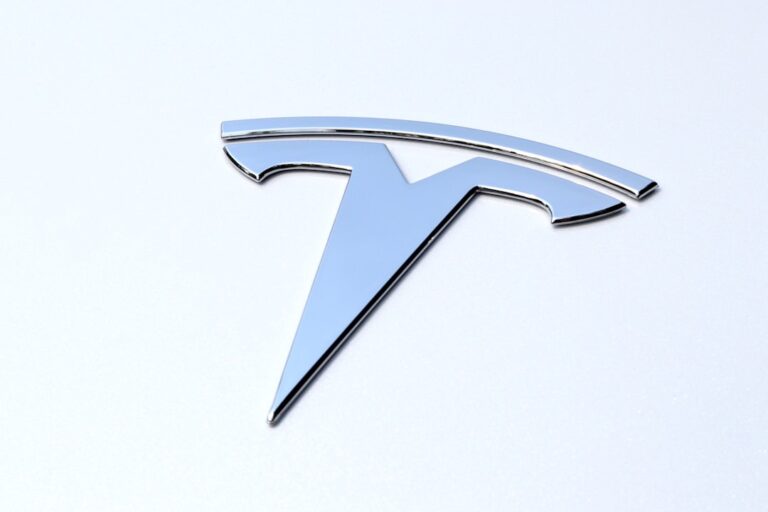
Tesla, Inc. (TSLA) has become a household name, not just for its innovative electric vehicles but also for its remarkable stock performance. Over the years, Tesla’s stock has captured the attention of investors, analysts, and the general public alike.
The company’s journey on the NASDAQ has been nothing short of extraordinary, characterized by dramatic highs and lows that reflect both its ambitious vision and the volatile nature of the stock market. As of October 2023, Tesla’s stock price has seen significant fluctuations, influenced by various internal and external factors. This article aims to delve into Tesla’s stock performance, exploring its historical trends, the elements that drive its value, and what the future may hold for this electric vehicle giant.
Investors are often drawn to Tesla not only for its groundbreaking technology but also for the potential returns it offers. The company’s stock has been a rollercoaster ride, with periods of rapid growth followed by corrections that leave many wondering about its sustainability. Understanding the nuances of Tesla’s stock performance requires a comprehensive analysis of its historical data, market dynamics, and competitive landscape.
As we embark on this exploration, we will uncover the key factors that have shaped Tesla’s stock trajectory and what they mean for potential investors.
Key Takeaways
- Tesla’s stock has shown significant volatility and growth over the years, attracting both investors and critics.
- Historical performance of Tesla’s stock on NASDAQ has been marked by dramatic fluctuations and periods of rapid growth.
- Factors affecting Tesla’s stock performance include production numbers, delivery targets, competition, and market sentiment towards electric vehicles.
- Tesla’s future outlook and potential growth opportunities lie in its expansion into new markets, technological advancements, and sustainable energy solutions.
- Competitors’ impact on Tesla’s stock performance is significant, with the actions and innovations of companies like Ford, GM, and other electric vehicle manufacturers influencing investor confidence.
Historical Performance of Tesla’s Stock on NASDAQ
Tesla’s journey on the NASDAQ began in June 2010 when it went public at an initial offering price of $17 per share. Since then, the stock has experienced a meteoric rise, reaching an all-time high of over $1,200 per share in late 2021. This remarkable growth can be attributed to several factors, including increasing demand for electric vehicles (EVs), expansion into new markets, and the company’s commitment to innovation.
Over the years, Tesla has consistently outperformed many traditional automakers, positioning itself as a leader in the EV market. The historical performance of Tesla’s stock is marked by significant milestones that reflect both its achievements and challenges. For instance, in 2013, Tesla became profitable for the first time, which sent its stock soaring.
However, the company has also faced periods of volatility, such as during the COVID-19 pandemic when supply chain disruptions impacted production. Despite these challenges, Tesla’s stock has shown resilience, bouncing back stronger than ever as consumer interest in sustainable transportation continues to grow.
Factors Affecting Tesla’s Stock Performance

Several factors influence Tesla’s stock performance, ranging from macroeconomic trends to company-specific developments. One of the most significant drivers is the increasing global demand for electric vehicles. As governments worldwide implement stricter emissions regulations and consumers become more environmentally conscious, the market for EVs is expected to expand rapidly.
This shift presents a substantial opportunity for Tesla to capture a larger share of the automotive market. Another critical factor is Tesla’s production capacity and supply chain management. The company’s ability to scale production efficiently while maintaining quality standards directly impacts its profitability and stock performance.
Recent investments in Gigafactories around the world have positioned Tesla to meet growing demand while reducing production costs. Additionally, advancements in battery technology and energy storage solutions further enhance Tesla’s competitive edge in the market.
Tesla’s Future Outlook and Potential Growth Opportunities
| Factors | Future Outlook |
|---|---|
| Electric Vehicle Market | Expected to grow rapidly as more countries commit to reducing carbon emissions |
| Autonomous Driving Technology | Potential for significant growth as the technology matures and becomes more widely adopted |
| Battery Technology | Opportunity for expansion as demand for energy storage solutions increases |
| Global Expansion | Potential for growth in new markets as Tesla expands its presence worldwide |
| Renewable Energy Integration | Opportunity to capitalize on the shift towards renewable energy sources |
Looking ahead, Tesla’s future appears promising, with several growth opportunities on the horizon. The company is actively expanding its product lineup beyond electric vehicles to include energy solutions such as solar panels and battery storage systems. This diversification not only enhances revenue streams but also aligns with Tesla’s mission to accelerate the world’s transition to sustainable energy.
Moreover, international expansion presents another avenue for growth. As Tesla enters new markets in Asia and Europe, it stands to benefit from increased sales and brand recognition. The company’s recent entry into markets like China has already shown positive results, with strong demand for its Model 3 and Model Y vehicles.
As production ramps up in these regions, Tesla is well-positioned to capitalize on the growing appetite for electric vehicles globally.
Analysis of Competitors’ Impact on Tesla’s Stock Performance
Tesla operates in a highly competitive landscape, with traditional automakers and new entrants vying for market share in the electric vehicle sector. Companies like Ford, General Motors, and newer players such as Rivian and Lucid Motors are all investing heavily in EV technology and infrastructure. This competition can impact Tesla’s stock performance as investors weigh the company’s ability to maintain its market leadership against emerging rivals.
While competition poses challenges, it also drives innovation within the industry. As competitors introduce new models and technologies, Tesla is compelled to enhance its offerings continually. This dynamic can lead to increased consumer interest and ultimately benefit Tesla’s stock performance if it successfully differentiates itself from competitors through superior technology or customer experience.
Potential Risks and Challenges for Tesla’s Stock

Despite its impressive growth trajectory, Tesla faces several risks that could impact its stock performance. One significant concern is regulatory scrutiny. As governments implement stricter regulations on emissions and safety standards, Tesla must navigate these complexities while ensuring compliance.
Any missteps could result in fines or production delays that negatively affect investor confidence. Additionally, supply chain disruptions remain a persistent challenge for Tesla. The global semiconductor shortage has already impacted many automakers, including Tesla.
If these issues persist or worsen, they could hinder production capabilities and lead to missed sales targets. Investors must remain vigilant about these risks as they evaluate Tesla’s long-term prospects.
Expert Opinions and Analyst Predictions for Tesla’s Stock
Expert opinions on Tesla’s stock vary widely, reflecting differing perspectives on its future potential. Some analysts remain bullish on Tesla’s growth prospects, citing its strong brand loyalty and innovative technology as key drivers of future success. They predict that as EV adoption accelerates globally, Tesla will continue to capture significant market share.
Conversely, some analysts express caution regarding Tesla’s valuation relative to its earnings potential. They argue that while the company has achieved remarkable growth, its stock price may not be sustainable in the long term without consistent profitability. These differing viewpoints highlight the importance of conducting thorough research before making investment decisions related to Tesla.
Recommendations for Investors and Final Thoughts on Tesla’s Stock
In conclusion, Tesla’s stock performance presents both opportunities and challenges for investors. The company’s historical growth trajectory is impressive, driven by increasing demand for electric vehicles and strategic expansions into new markets. However, potential risks such as regulatory scrutiny and supply chain disruptions warrant careful consideration.
For investors looking to enter or maintain a position in TSLA, it is essential to stay informed about industry trends and company developments. Diversifying investments within the EV sector can also mitigate risks associated with individual stocks. Ultimately, while Tesla remains a compelling investment opportunity due to its innovative approach and market leadership, prudent decision-making is crucial in navigating this dynamic landscape.
As we reflect on Tesla’s journey thus far, one thing is clear: the future of transportation is electric, and Tesla is at the forefront of this revolution. — Further Reading:
1. [Tesla Investor Relations](https://ir.tesla.com)
2.
[MarketWatch – TSLA](https://www.marketwatch.com/investing/stock/tsla)
3. [Yahoo Finance – TSLA](https://finance.yahoo.com/quote/TSLA/)
4.
cnbc.com/electric-vehicles/)
5.
[Bloomberg – Tesla Analysis](https://www.bloomberg.com/quote/TSLA:US)
According to a recent article on TSLA Investors, Tesla’s stock has fallen for the seventh consecutive week, raising concerns among investors. This decline comes after significant scrutiny of Tesla’s performance in early 2025, as discussed in a recent podcast on TSLA Investors. Analysts are trying to understand why Tesla’s stock is trading lower today, as highlighted in another article on TSLA Investors. Investors are closely monitoring these developments to gauge the future performance of Tesla’s stock.
Check out the very latest Tesla products here:
FAQs
What is NASDAQ TSLA?
NASDAQ TSLA refers to the stock symbol for Tesla, Inc. on the NASDAQ stock exchange. It is used to identify and trade shares of Tesla, Inc. on the stock market.
What is NASDAQ?
NASDAQ is a global electronic marketplace for buying and selling securities, as well as the benchmark index for U.S. technology stocks. It is the second-largest stock exchange in the world by market capitalization, after the New York Stock Exchange (NYSE).
What is Tesla, Inc.?
Tesla, Inc. is an American electric vehicle and clean energy company. It is known for its electric cars, energy storage solutions, and solar products. The company was founded by Elon Musk, JB Straubel, Martin Eberhard, Marc Tarpenning, and Ian Wright.
How can I buy or sell TSLA stock on NASDAQ?
To buy or sell TSLA stock on NASDAQ, you will need to open a brokerage account with a licensed brokerage firm. Once you have an account, you can place buy or sell orders for TSLA stock through the brokerage’s trading platform.
What factors can affect the price of TSLA stock on NASDAQ?
The price of TSLA stock on NASDAQ can be influenced by a variety of factors, including the company’s financial performance, market demand for electric vehicles, changes in energy policies, competition in the automotive industry, and global economic conditions. Additionally, news and announcements related to Tesla, Inc. and its products can also impact the stock price.
